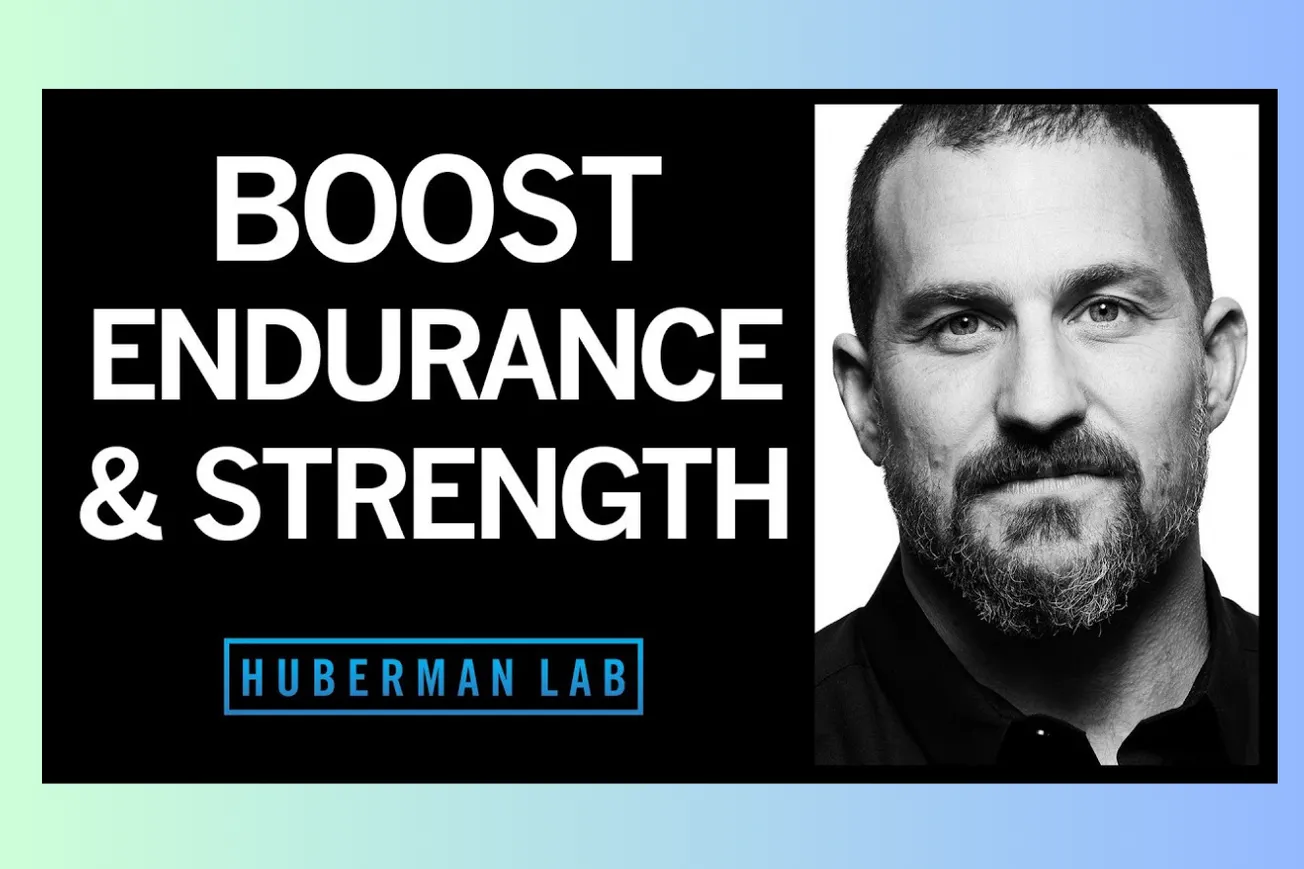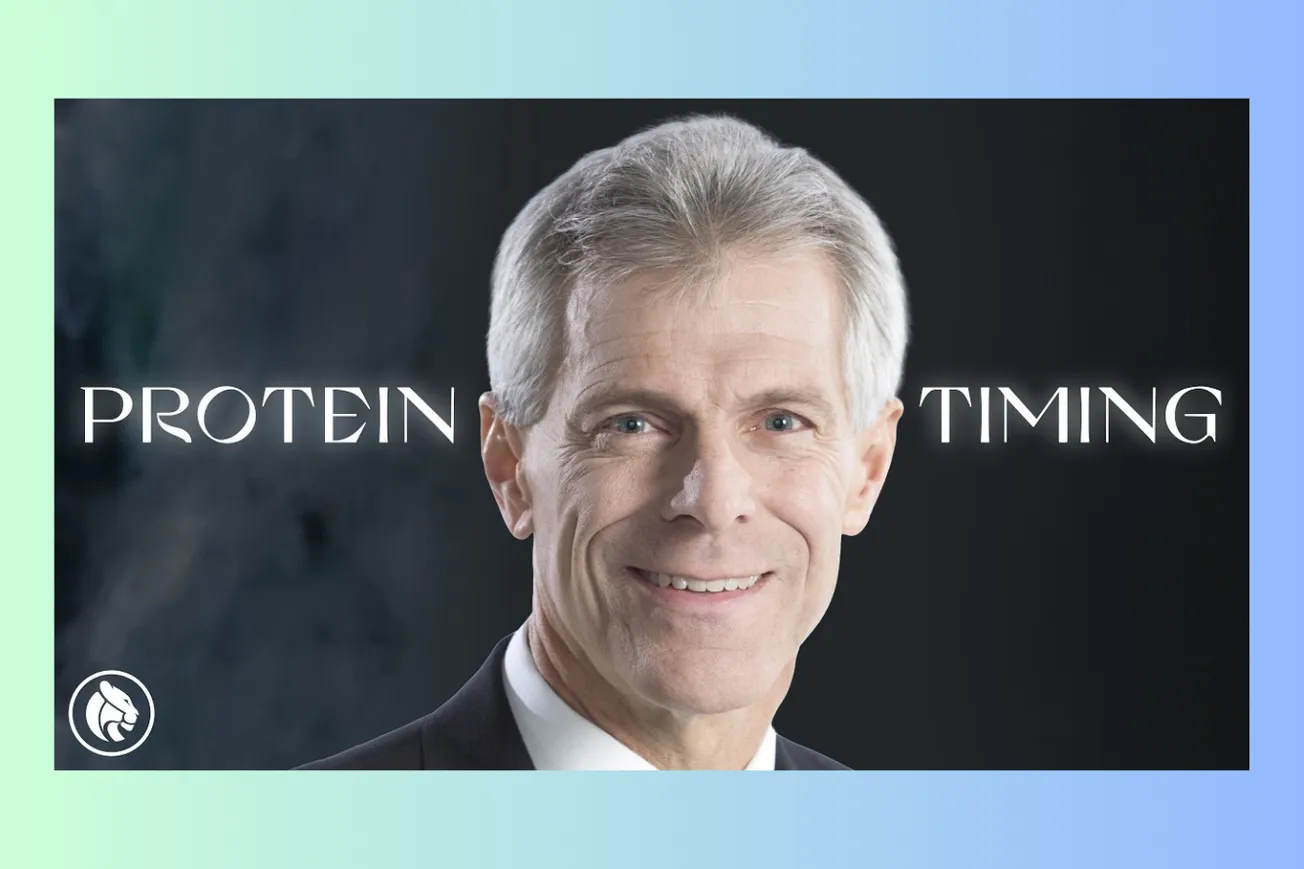Table of Contents
Discover how regulating body temperature, particularly through targeted cooling methods, can dramatically boost your strength, endurance, and recovery speed. Learn the science behind your body's natural cooling systems and avoid common pitfalls that hinder performance gains by understanding the impact of heat on muscle function.
Key Takeaways
- Overheating significantly limits exercise performance by impairing muscle function; keeping muscles cool is crucial for sustained effort and output.
- Your palms, face, and the soles of your feet are unique "radiators" (glaborous skin with AVAs) that allow for rapid heat exchange with the environment.
- Strategically cooling these specific areas during exercise can drastically increase work capacity, allowing for significantly more reps, sets, or longer endurance.
- Cooling these glaborous skin regions is far more effective for performance and rapid recovery than whole-body immersion like ice baths or cold showers.
- Pre-workout stimulants or excessive caffeine (for non-adapted users) can raise core body temperature, counterproductively limiting workout duration and intensity.
- Whole-body cold immersion immediately post-workout might hinder muscle growth adaptations (like hypertrophy) by blocking inflammatory and signaling pathways (e.g., mTOR).
- Using cool (not freezing) temperatures on the face, palms, or feet avoids vasoconstriction, ensuring effective heat transfer out of the body core.
- Understanding cardiac drift—how heat increases heart rate independently of effort—explains why cooling prevents premature fatigue during endurance activities.
- Recovery is accelerated by returning core body temperature to baseline quickly post-exercise, best achieved via targeted cooling of glaborous skin.
Timeline Overview
- 00:00–15:00 — Introduction to optimizing physical performance, focusing on temperature as a key, often overlooked variable. Discussion on homeostasis, the dangers of hyperthermia, and how excessive heat impairs cellular enzyme function, setting the stage for why cooling is critical.
- 15:00–30:00 — Explanation of the body's thermoregulation mechanisms: vasoconstriction/vasodilation, sweating for heat dumping, and piloerection (goosebumps) for heat conservation. Introduction to how muscle fatigue is linked to temperature, specifically the heat sensitivity of the enzyme pyruvate kinase, crucial for muscle contraction. Craig Heller's research introduced via a striking example of tripled dip performance through cooling.
- 30:00–45:00 — Deep dive into the three main body compartments for temperature regulation: core, periphery, and the highly efficient glaborous skin surfaces (palms, face, soles of feet). Detailed explanation of Arterio-Venous Anastomoses (AVAs) in these areas, their unique structure bypassing capillaries for rapid heat exchange. Presentation of Heller's pull-up study (100 to 600 reps) and bench press study, showing cooling outperforming even anabolic steroids for strength gains.
- 45:00–60:00 — Focus on endurance performance and the concept of "cardiac drift," where heat increases heart rate regardless of workload, triggering the brain's 'stop' signal. Explanation of how palmer cooling combats cardiac drift, allowing sustained effort and preventing hyperthermia. Discussion extends to using these portals for heating in hypothermic situations and outlining practical, low-cost cooling methods like using cool water or a cold can, emphasizing the importance of not causing vasoconstriction with excessive cold.
- 60:00–75:00 (approx. 1:00:00 - 1:15:00) — Application of cooling principles for recovery. Comparison of targeted glaborous skin cooling versus less efficient whole-body methods (ice packs on neck/head, ice vests). Examination of post-workout recovery: why whole-body cold immersion (ice baths, cold showers) might hinder muscle adaptation by blunting inflammation and pathways like mTOR. Highlighting the impact of substances: caffeine's effect depending on adaptation (vasodilation vs. constriction), NSAIDs lowering temperature but with potential kidney/liver risks.
- 75:00–End (approx. 1:15:00 - 1:23:40) — Brief mention of diet-induced thermogenesis (minor effect). Recap of key principles: the power of targeted cooling via glaborous skin for both performance enhancement and recovery acceleration. Encouragement for listeners to experiment safely with the protocols. Standard podcast outro, sponsor acknowledgements, and Patreon information.
The Critical Role of Temperature in Performance
- Your body constantly strives for homeostasis, maintaining a narrow internal temperature range. Getting too hot (hyperthermia) is extremely dangerous, potentially causing cell death, especially in the brain, and impairing the function of critical enzymes needed for energy production and basic cellular processes.
- Enzymes, the protein catalysts essential for nearly all bodily functions (like pyruvate kinase for muscle energy), are highly sensitive to temperature. Excessive heat changes their structure, rendering them ineffective, much like melting a key tool. This is a primary reason why overheating shuts down physical performance.
- While getting too cold (hypothermia) is also dangerous, the body has a wider tolerance range for cold compared to heat. The critical limiting factor in most exercise scenarios is the buildup of heat within the working muscles and the body core.
- Muscle contraction itself generates heat. The ability of muscles to continue contracting is directly tied to their temperature. When muscle temperature exceeds a certain threshold (around 39-40°C), the processes powering contractions, like ATP utilization involving pyruvate kinase, begin to fail, forcing you to stop or drastically reduce effort.
- The sensation of fatigue or the urge to stop exercising is often a subconscious protective mechanism triggered by rising core and muscle temperature, even before you consciously feel "too hot." This mechanism prevents catastrophic overheating but can limit potential performance if heat isn't managed effectively.
- Effectively managing and dumping heat during exercise allows muscles to function optimally for longer, delaying fatigue and enabling significantly greater work output—more repetitions, higher intensity, or longer duration—compared to exercising in a state of accumulating heat.
How Your Body Heats Up and Cools Down
- Your body employs automatic physiological responses to manage temperature. When you overheat, vasodilation occurs: blood vessels near the skin surface widen, increasing blood flow to the periphery to release heat. Simultaneously, you sweat; the evaporation of this sweat from the skin surface is a primary cooling mechanism.
- Humidity hinders cooling because it reduces the rate at which sweat can evaporate from the skin. This is why hot, humid days feel much warmer and lead to faster fatigue during exertion compared to hot, dry days, even if you're sweating profusely in both conditions.
- Conversely, when you get cold, vasoconstriction occurs: peripheral blood vessels narrow, shunting blood flow towards the core to protect vital organs and conserve heat. Sweating decreases or stops.
- Piloerection, commonly known as goosebumps, is an evolutionary remnant from when humans had more body hair. Tiny muscles attached to hair follicles contract, making hairs stand on end. This was meant to trap a layer of insulating air close to the skin, reducing heat loss, though it's largely ineffective for modern humans.
- Understanding these basic mechanisms highlights why simply exposing the body to cold isn't always the most effective cooling strategy. Extreme cold can trigger vasoconstriction, paradoxically slowing down the transfer of heat out of the body core by shutting down peripheral circulation.
- Factors like stimulants (e.g., caffeine in non-adapted individuals) can cause vasoconstriction, impairing heat dumping. Conversely, adapted caffeine use or substances like alcohol cause vasodilation, potentially aiding heat release but introducing other physiological effects.
Understanding these core processes is key to leveraging targeted cooling strategies effectively.
Glaborous Skin: Your Body's Radiators (AVAs Explained)
- Beyond the general core and periphery, your body possesses specialized zones highly efficient at exchanging heat with the environment: the palms of your hands, the soles of your feet, and your face. These areas feature glaborous (hairless or near-hairless) skin.
- The unique efficiency of these areas stems from a specialized vascular structure called Arterio-Venous Anastomoses (AVAs). These are direct connections between small arteries and small veins, largely bypassing the fine capillary networks found elsewhere in the skin.
- AVAs act like biological radiators. They have a wider diameter and can manage a much higher volume of blood flow compared to standard capillary beds. This structure allows for significantly faster transfer of heat either out of the body (cooling) or into the body (heating).
- Because AVAs allow blood to move rapidly between the arterial (carrying core heat) and venous systems close to the skin surface, applying cooling or heating to these specific glaborous skin areas has a disproportionately large and fast effect on the body's overall core temperature.
- The effectiveness of AVAs is why cooling your palms can dramatically impact your ability to perform strenuous exercise, as demonstrated in studies showing massive increases in pull-ups or bench press reps. The cooling applied to the hands efficiently lowers the temperature of blood circulating back to the core and working muscles.
- It's crucial to use the right temperature when trying to leverage AVAs for cooling. Water or surfaces that are too cold (e.g., ice) will trigger vasoconstriction in the AVAs, shutting down blood flow and preventing the efficient transfer of heat out of the body. Cool, not freezing, temperatures are optimal. "You don't want it to be so cold that you cause vasoconstriction because then the cold won't pass from the tube to the hand and to the core."
Groundbreaking Research: Cooling for Massive Gains (Heller's Studies)
- Research led by Dr. Craig Heller at Stanford University demonstrated the profound impact of targeted cooling on physical performance, particularly by leveraging the AVAs in the palms (palmar cooling).
- In one striking study involving pull-ups, subjects initially performed around 100 total pull-ups in a session. By incorporating palmar cooling (holding a specifically temperature-controlled device) between sets, they nearly doubled their output to ~180 pull-ups in the very next session.
- With continued training using palmar cooling over several weeks, the same subjects astonishingly increased their total pull-up capacity to around 600 reps in the same timeframe – a six-fold increase compared to their baseline, showcasing a powerful training and performance effect.
- Similar dramatic improvements were observed in bench press performance. Subjects using palmar cooling significantly outperformed control groups, even surpassing the gains seen in a group using anabolic steroids (testosterone cypionate), highlighting the potency of this physiological approach.
- Endurance performance is also significantly enhanced. Cooling prevents or delays "cardiac drift," where heart rate increases due to heat accumulation even when workload remains constant. By keeping core temperature lower via palmar (or facial/foot sole) cooling, athletes can maintain a target intensity for much longer before hitting the physiological 'stop' signal triggered by combined heat and effort.
- These studies prove that heat accumulation is a major limiting factor in various forms of exercise. Effectively dumping heat through the body's natural AVA portals allows individuals to tap into physical capacities far beyond what they can achieve when uncooled, leading to faster and greater training adaptations. "If you get too hot, you stop exercising."
Practical Cooling Strategies for Workouts & Recovery
- To leverage cooling during workouts without specialized devices, focus on the glaborous skin areas: palms, face, and soles of feet. Use cool, but not ice-cold, water or objects. The goal is heat extraction without causing vasoconstriction.
- During rest periods between sets (e.g., pull-ups, dips, weights), hold a cool (not frozen) water bottle or can, passing it between hands, or place palms on a cool surface or briefly immerse them in cool water (e.g., a sink or bucket) for 30-60 seconds.
- For runners or cyclists, periodically splashing the face with cool water or holding a cool, damp cloth to the face or neck can help dump heat. Passing a single cool bottle between hands while running is another option.
- Cooling the soles of the feet is also effective but can be less practical during activity. However, resting with feet in cool water or on a cool surface between bouts of exercise or post-workout can aid overall cooling.
- For rapid recovery immediately post-exercise (e.g., between rounds in sports, halftime), prioritize cooling the face, palms, and feet over traditional methods like ice packs on the neck or back, or ice vests, which are less efficient at core temperature reduction.
- Avoid excessive cold. If the surface feels painfully cold or causes numbness, it's likely too cold and inducing vasoconstriction, hindering heat transfer. Adjust the temperature or duration accordingly. Experiment to find what feels cool and refreshing without being shocking.
Temperature, Recovery, and Common Pitfalls (Stimulants, NSAIDs, Ice Baths)
- Accelerating the return to baseline core body temperature after a workout speeds up overall recovery, allowing muscles and tissues to repair more effectively and enabling readiness for the next training session. Targeted cooling of the face, palms, and feet is the most efficient way to achieve this.
- Whole-body cold immersion (ice baths, cryotherapy, very cold showers) immediately after strength training may actually impede long-term adaptations like muscle growth (hypertrophy). The intense cold can blunt necessary inflammatory responses and interfere with signaling pathways like mTOR, which are crucial for muscle repair and building.
- Stimulants like high doses of caffeine (especially in non-adapted individuals) or pre-workout formulas often increase core body temperature. While they might provide an initial energy boost, this thermogenic effect can lead to earlier fatigue and reduced overall work capacity during the session itself.
- For caffeine-adapted individuals (regular, moderate users), caffeine before exercise may cause vasodilation, potentially aiding heat dumping. However, post-exercise caffeine might hinder cooling due to subsequent vasoconstriction as effects wear off. Consider your adaptation level carefully.
- Non-Steroidal Anti-Inflammatory Drugs (NSAIDs) like ibuprofen or naproxen can lower body temperature and are sometimes used by endurance athletes to manage heat during long events. However, this carries risks, particularly for kidney and liver function, especially when dehydrated. Using physiological cooling methods is generally safer.
- Alcohol causes vasodilation and can lower body temperature, which might seem beneficial for post-exercise cooling. However, alcohol also impairs muscle protein synthesis, hydration, and sleep quality, negatively impacting overall recovery despite the temperature effect. "Anything that you ingest after exercise that would increase body temperature is going to impede recovery."
Bottom Line
Effectively managing body temperature, primarily by cooling the palms, face, and soles of the feet, is a powerful, science-backed strategy to significantly boost exercise performance and accelerate recovery. Avoid pre-workout thermogenics and be cautious with post-workout whole-body cold immersion to maximize training adaptations.









